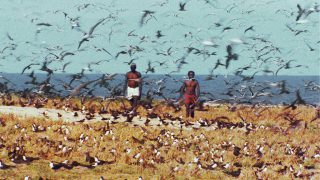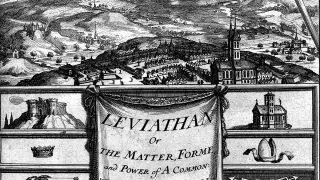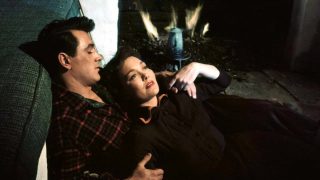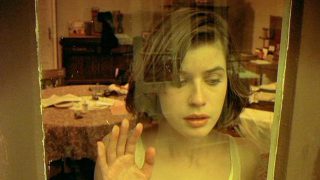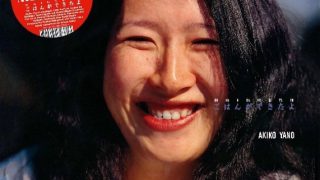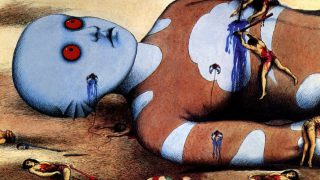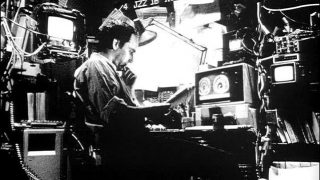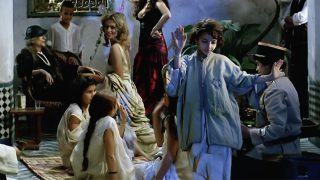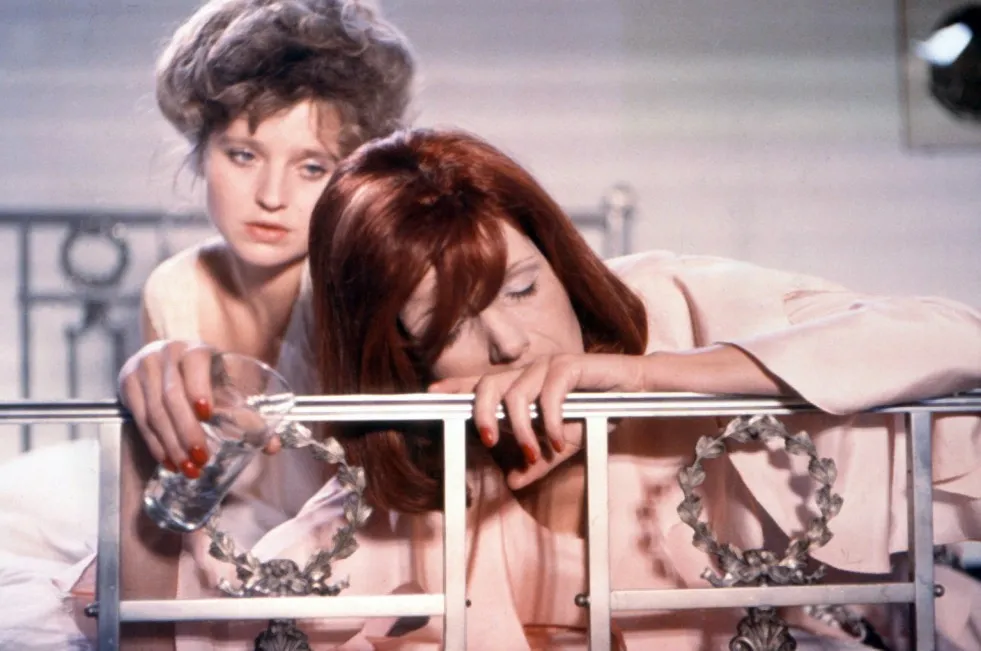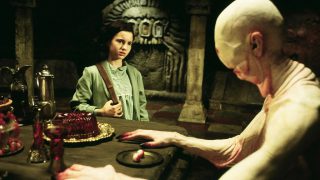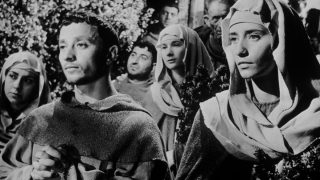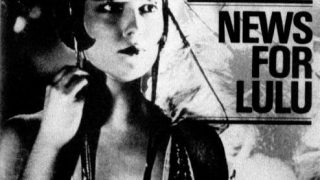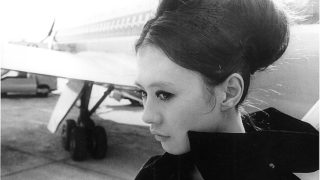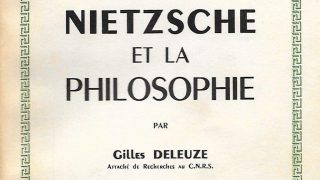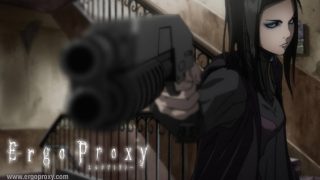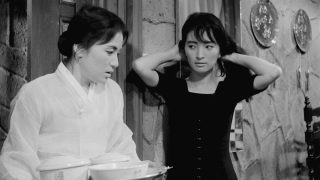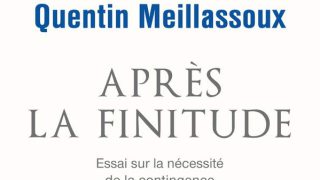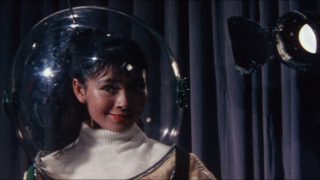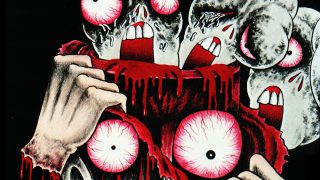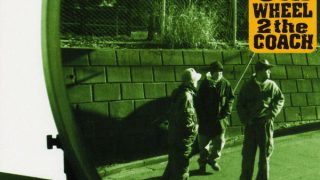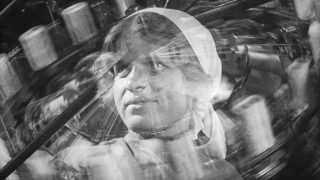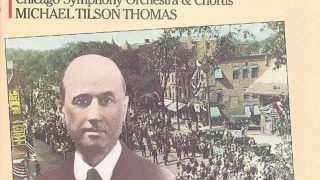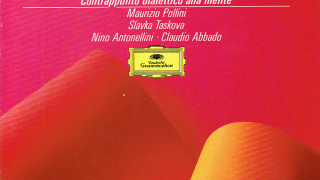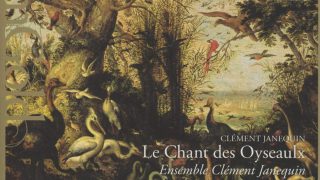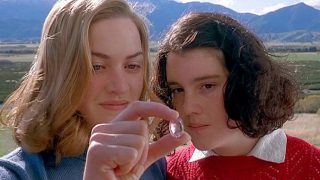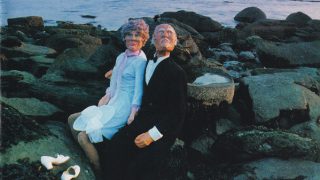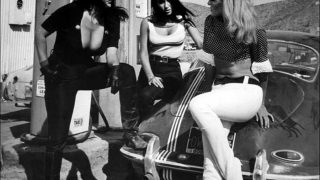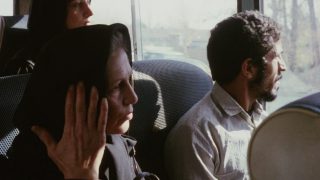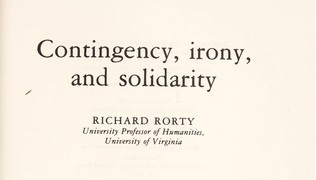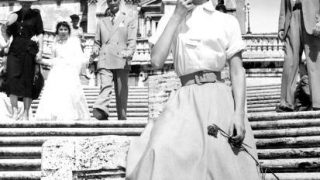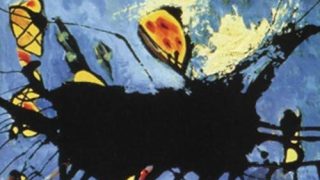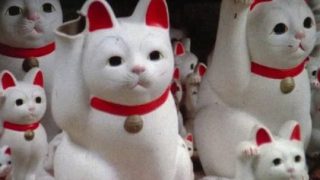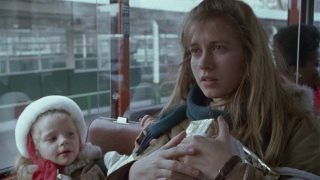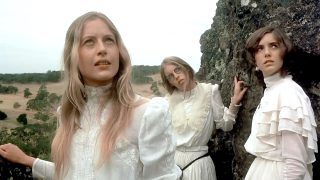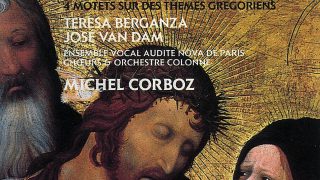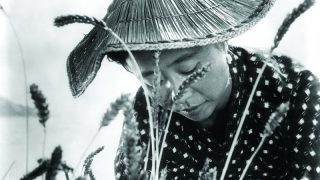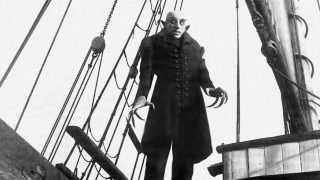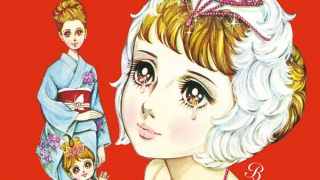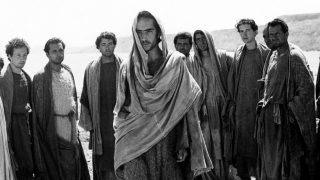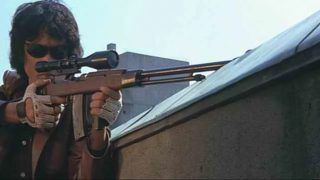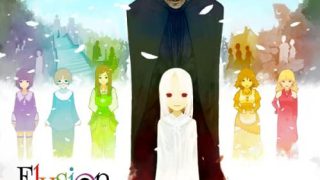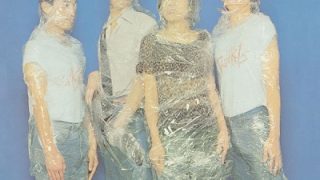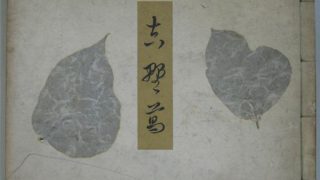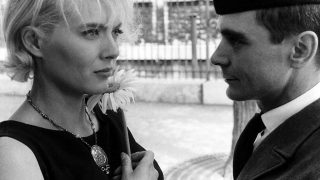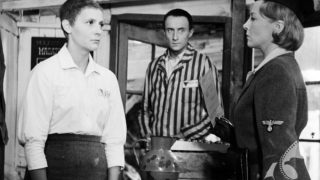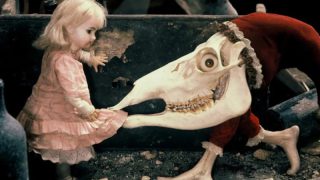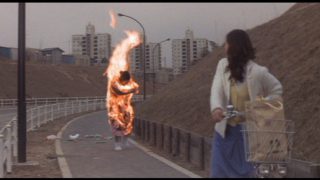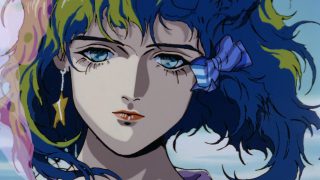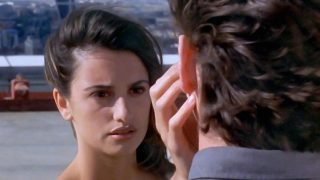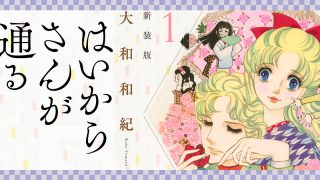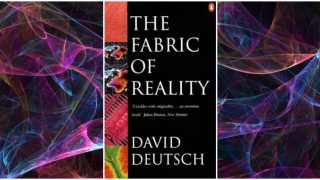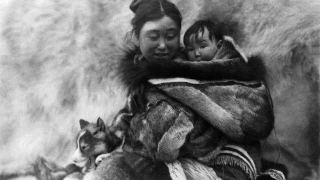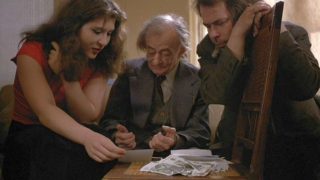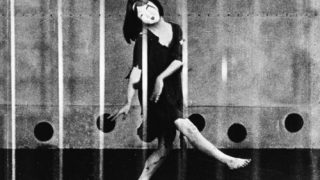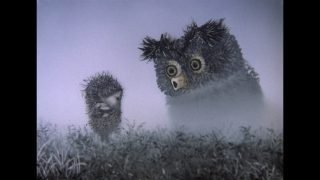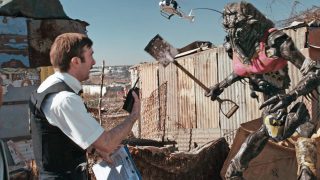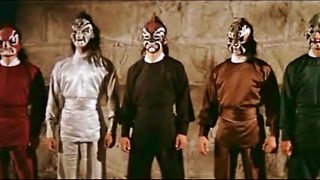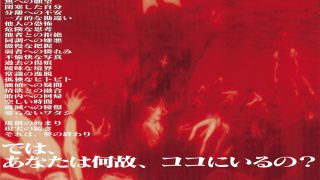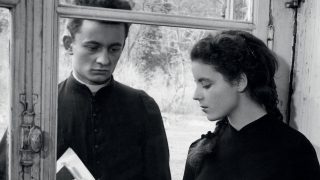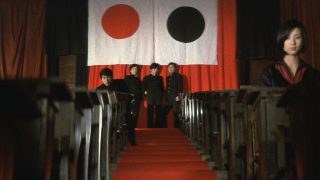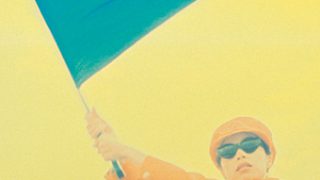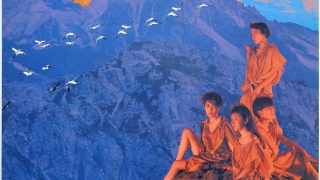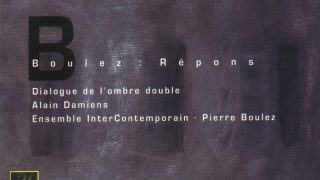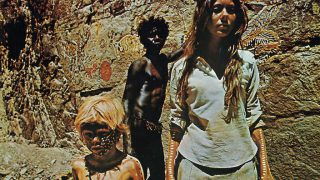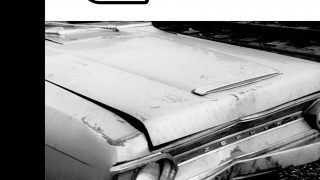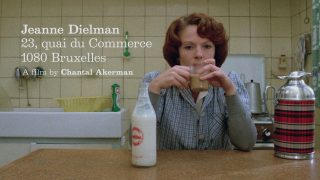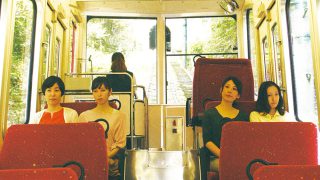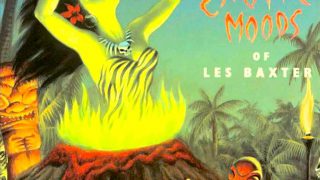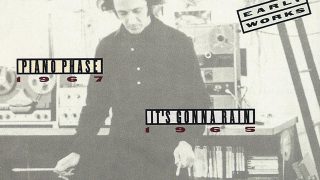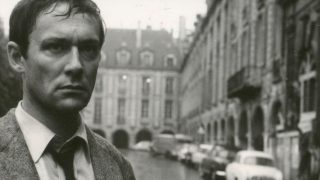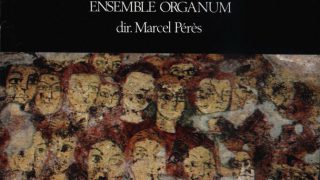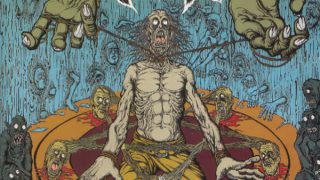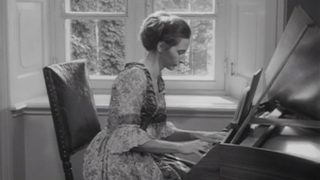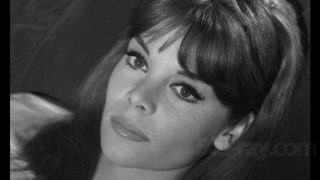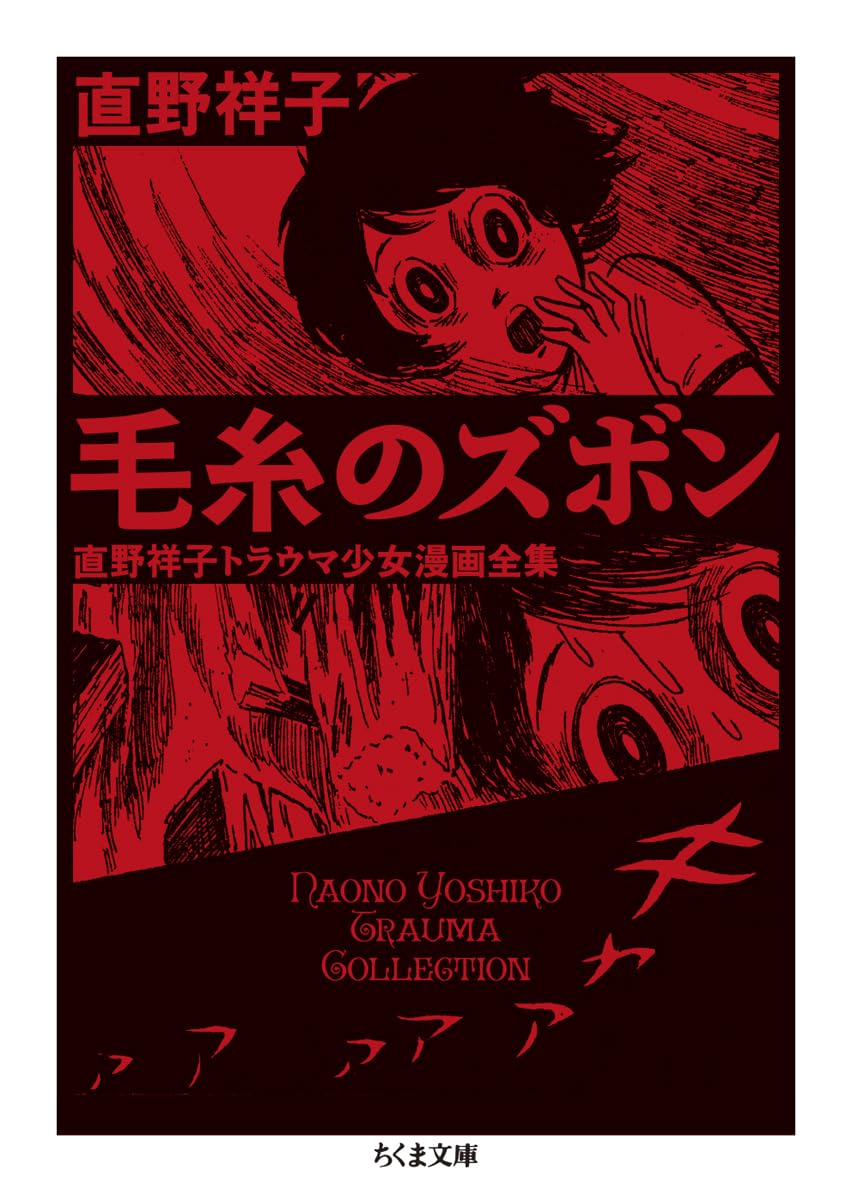- Overview
- About the Author
- Commentary
- Introduction of Each Story
- “Mari wa Dare no Ko (Whose Child is Mari)” – “Bessatsu Nakayoshi”, May 1971 issue
- “Keito no Zubon (Wool Pants)” – “Nakayoshi”, May 1971 issue
- “Otsuta-sama” – “Shōjo Friend”, August 24, 1971 issue
- “Shukudai (Homework)” – “Shōjo Friend”, September 21, 1971 issue
- “Himo (String)” – “Shōjo Friend”, September 28, 1971 issue
- “Kakurenbo (Hide-and-Seek)” – “Shōjo Friend”, October 5, 1971 issue
- “Fukushū (Revenge)” – “Shōjo Friend”, October 12, 1971 issue
- “Kojiki no Shi (Death of a Beggar)” – “Shōjo Friend”, October 19, 1971 issue
- “Hajimete no Kazoku-Ryokō (First Family Trip)” – “Nakayoshi”, October 1971 issue
- “Kubi-kazari (Necklace)” – “Nakayoshi”, November 1971 issue
- “Ame (Rain)” – “Bessatsu Nakayoshi”, November 15, 1971 issue
- “Cheyenne no Ōwashi (The Great Eagle of Cheyenne)” – “Shōjo Friend”, February 22, 1972 issue
- “Chizome no Nikki ga Aozora ni Mau (A Blood-stained Diary Dances in the Blue Sky)” – “Shōjo Friend”, October 3, 1972 issue
- “Hebigami-sama” – “Shōjo Friend”, February 20, 1973 issue
Overview
“Wool Pants: The Complete Collection of Traumatic Shōjo Manga by Yoshiko Naono” (original Japanese title: Keito no Zubon: Naono Yoshiko Trauma Shōjo Manga Zenshū) is a book by Japanese manga artist Yoshiko Naono. It was published by Chikuma Shobō in 2025.
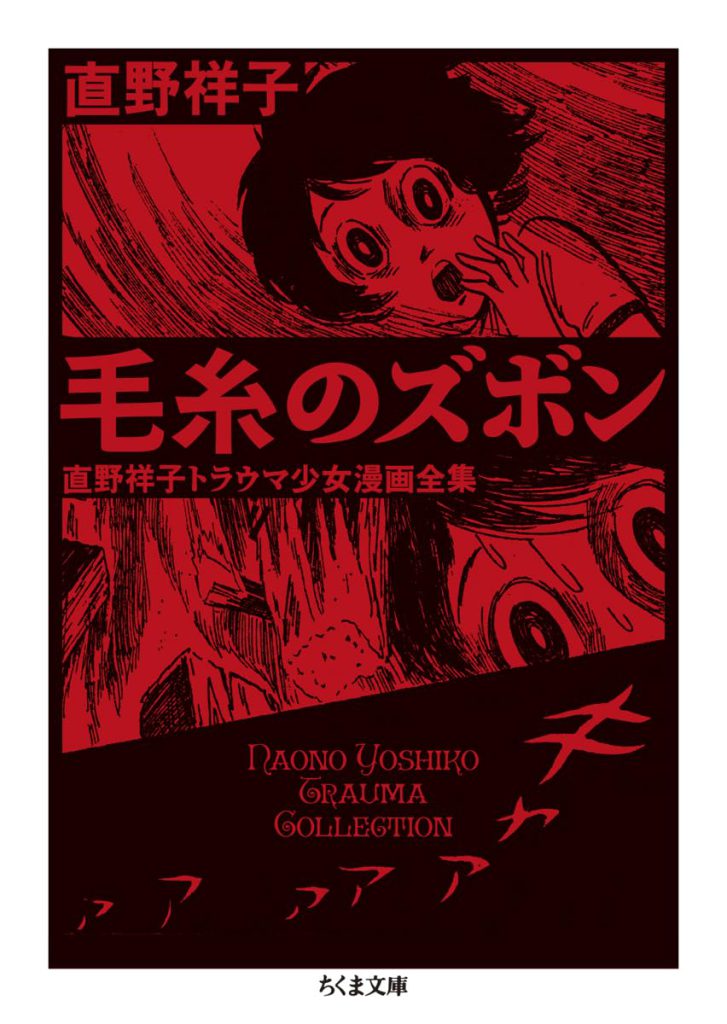
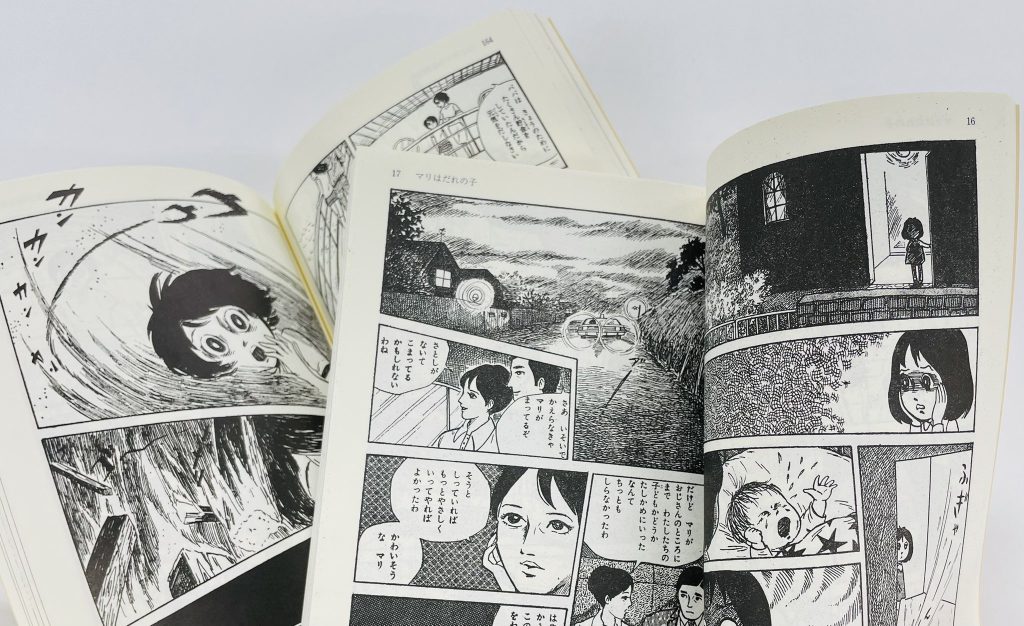
About the Author
Yoshiko Naono is a Japanese manga artist and illustrator.
She was born in Rokkō, Kobe City, Hyōgo Prefecture, and raised in Shukugawa.
In 1968, she made her debut as a manga artist when her one-shot work “Jikken (Experiment)” was selected in the newcomer section of Seirindō’s monthly manga magazine “Garo“.
Naono published suspense works depicting the dark side of human psychology in the shōjo manga magazines “Nakayoshi” and “Shōjo Friend” from 1971 to 1973. The shocking content left a strong impression on readers at the time.
After that, she continued to publish her works in magazines for youths and adults, such as “Big Comic”, “Josei Seven”, and “Josei Jishin”, but in the 1995 Great Hanshin-Awaji Earthquake, she was affected by the disaster and lost most of her early manuscripts.
In 2005, she published a picture diary titled “Shukugawa Hidamari Nikki (Shukugawa Sunny Spot Diary)”, depicting her family’s life in the Shukugawa area from the mid-1950s to the early 1960s, which was published by Shogakukan Square.
Commentary
Basic Information
This book was published as a bunkobon (pocket-sized paperback) and an ebook by Chikuma Shobō in 2025.
This book is a complete collection of 14 representative works by Naono, originally published as one-shot short stories in the magazines “Nakayoshi” and “Shōjo Friend” between 1971 and 1973. It is a valuable reprint of Naono’s works, which had never been compiled into a book before.
At the end of the book, in “Author’s Commentary: Manga and Me”, Naono personally explains all 14 works.
Background of the Reprint
For the publication of this book, literary introducer Hiroki Kashiragi contributed to the editing, while Manga Gorilla, the head of the Henkyō (Frontier) Gekiga reprint label “Yodomi-sha”, provided reference materials and other support.
Since the original manuscripts preserved at the author’s family home were destroyed by fire in the Great Hanshin-Awaji Earthquake, this book has been reproduced from the magazine publications.
About the Drawing Style
Naono cites Sanpei Shirato’s “Kamui” (1964–1971), which was serialized in “Garo”, as one of her favorite works. Her shōjo manga is characterized by a realistic style with many drawn lines influenced by Shirato and other gekiga artists.
About the Motifs
Naono states in her own commentary that her central motifs are “guilt, incidents caused by misunderstandings, irreparable failures, regret, and repentance”. Many of the works included in this book deal with these themes, and most of the stories have unhappy endings.
Introduction of Each Story
“Mari wa Dare no Ko (Whose Child is Mari)” – “Bessatsu Nakayoshi”, May 1971 issue
This is the story of a girl named Mari, who believes she is not her parents’ child because she does not resemble them. Mari harbors murderous intent toward her young brother, who looks like their parents.
“Keito no Zubon (Wool Pants)” – “Nakayoshi”, May 1971 issue
This is a story on the theme of how goodwill and affection can sometimes cause suffering.
A boy named Hiroshi used to wear his grandmother’s hand-knitted sweater to elementary school, but he disliked drawing attention with his brightly colored outfits.
One day, his grandmother started knitting a pair of flashy woolen pants for him to wear during his solo singing at the school play. In order to avoid wearing them, Hiroshi decided to take a certain action.
“Otsuta-sama” – “Shōjo Friend”, August 24, 1971 issue
This is a horror manga set in a haunted house, similar to a Japanese ghost story.
A girl named Akiko and her mother are living at an old Japanese-style mansion, which is cursed by a female ghost named Otsuta-sama. The ghost is wandering in search of a beautiful maiden’s head.
Akiko is afraid of having her head taken by the ghost. She conspires with her mother to invite her classmate Misako to their home during summer vacation, intending to make her a scapegoat.
“Shukudai (Homework)” – “Shōjo Friend”, September 21, 1971 issue
This is a work depicting the hopeless situation of a schoolchild as summer vacation ends despite having done little to no homework.
Hiroko, a fifth-grade student, has only three days left of summer vacation, yet she has barely touched her homework. To make matters worse, her family decides to take a trip to Hakone.
She imagines being scolded by her strict homeroom teacher and feels a deep sense of fear.
“Himo (String)” – “Shōjo Friend”, September 28, 1971 issue
This work depicts an incident that arose from a misunderstanding between two cousins.
Chie, a young girl, felt responsible for an accident she caused due to her carelessness while playing with fireworks during her ten-year-old summer vacation, which resulted in her cousin Aiko losing her sight.
For the next six years, Chie took care of Aiko every day after school, acting as her eyes.
The two were best friends, but their relationship changes when Chie falls in love with her boyfriend, Ken-chan.
Misunderstanding that Aiko is trying to tie her down, Chie takes a certain action to break free from Aiko.
“Kakurenbo (Hide-and-Seek)” – “Shōjo Friend”, October 5, 1971 issue
This is a story about a girl who is hiding a secret about her childhood friend who went missing.
Chikako (5 years old) is playing hide-and-seek with Mariko (3 years old) in a vacant lot when Mariko goes missing.
When Chikako is asked about Mariko by her mother, neighbors, and police officers, she lies, saying she knows nothing.
Twelve years later, a young woman resembling Mariko, who was allegedly kidnapped at the time and had been living in Kyūshū, is discovered.
Chikako meets the woman who might be Mariko, but soon after, an unexpected truth about the incident comes to light.
“Fukushū (Revenge)” – “Shōjo Friend”, October 12, 1971 issue
This is a story about the hidden truth behind a fatal traffic accident.
Maki Kasai, a high school girl, loses her father when he is hit and killed by a car. The driver of the car was the father of Masako, Maki’s classmate.
Maki drops out of high school, starts working, and saves money to buy a used car.
She then runs over Masako’s father, killing him and fulfilling her revenge. However, she later learns that her father’s death was not caused by Masako’s father’s negligence.
“Kojiki no Shi (Death of a Beggar)” – “Shōjo Friend”, October 19, 1971 issue
A girl named Emiko was devastated after losing her beloved doll, Marie, which she cherished like a little sister.
Three years later, Emiko’s mother discovers a beggar girl holding Marie.
Emiko tries to take Marie back from the girl, but feeling sorry for her, she begins giving alms to the girl.
However, the beggar’s unexpected true identity is later revealed.
“Hajimete no Kazoku-Ryokō (First Family Trip)” – “Nakayoshi”, October 1971 issue
This is a story about a girl who makes the worst choice by turning aware from the risk of fire and clinging to wishful thinking.
In 2019, this work was included in “Trauma Bungaku-kan (Traumatic Literature Museum)”, a book edited by Hiroki Kashiragi and published by Chikuma Shobō as an anthology of shocking novels and manga works.
A girl named Sachiko, who lives in Kobe, goes on a trip to Kyūshū with her parents.
Sachiko realizes that she forgot to turn off the iron before leaving the house. Not wanting to give up on the trip, she lies to her mother, saying she turned it off when asked.
After boarding a ship from Kobe Port, Sachiko worries about the possibility of a fire at home.
However, upon witnessing an elderly man miraculously survive after falling overboard, she begins to believe in divine salvation.
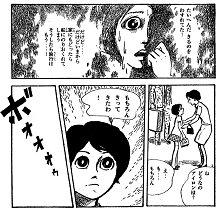
“Kubi-kazari (Necklace)” – “Nakayoshi”, November 1971 issue
A junior high school girl, Akiko Iwamoto, recalls an incident from her childhood when her mother’s emerald necklace went missing inside an elevator at a department store in Kobe while they were out shopping. Akiko remembers that at the time, there was a sharp-eyed woman standing behind her mother.
Attending her classmate Rumiko’s birthday party, Akiko notices that Rumiko’s mother bears a striking resemblance to the sharp-eyed woman.
A few days later, Akiko discovers that Rumiko has her mother’s necklace.
Having lost both her parents, Akiko had been taken in by relatives.
She decides to reclaim the necklace, which was her mother’s memento. Meanwhile, Rumiko learns that her mother is a habitual shoplifter.
“Ame (Rain)” – “Bessatsu Nakayoshi”, November 15, 1971 issue
This is a story depicting a fleeting relationship between a lonely girl and a bad girl.
Yumiko, an elementary school student, lost her mother in a car accident two years ago and had been living with her father.
On rainy days, her classmates’ mothers would come to school with umbrellas to pick up their children, but there was no one to pick up Yumiko.
One rainy day, while walking home alone from school, Yumiko meets a 15-year-old girl named Kei.
Kei starts coming to school on rainy days with an umbrella to pick up Yumiko.
Kei’s true intention is to steal valuables from Yumiko’s house, but Yumiko comes to adore Kei as if she were her mother.
“Cheyenne no Ōwashi (The Great Eagle of Cheyenne)” – “Shōjo Friend”, February 22, 1972 issue
This is a work depicting a supernatural incident that took place in America during the era of Westward expansion.
In a frontier village in the American West, Jane, the newborn daughter of Marie, dies of a fever.
Marie’s husband attacks a Cheyenne village and massacres the Cheyenne people.
Before dying, Aida, the daughter of the Cheyenne chief, prophesies that the Cheyenne’s guardian spirit, the great black eagle, will take revenge on the white settlers.
Jane comes back to life and grows into a young girl.
Fifteen years later, rumors spread in the village that a woman possessed by Aida’s spirit is summoning the great black eagle. Fearing revenge, the villagers try to find and kill the woman.
Jane’s close friend, Ozzie, is murdered by the villagers.
Soon after, Jane realizes that Aida’s spirit resides within her.
“Chizome no Nikki ga Aozora ni Mau (A Blood-stained Diary Dances in the Blue Sky)” – “Shōjo Friend”, October 3, 1972 issue
This work depicts a terrifying incident caused by a trivial misunderstanding at an all-girls school.
At Shiratani’s school, students are required to submit their diaries to their homeroom teacher once a week.
Believing that her classmate Maekawa has tattled on her rule-breaking and slack-off through her diary, Shiratani steals Maekawa’s diary and hides it.
Maekawa, who had written her own secret in the diary, becomes desperate to find it, fearing that her secret will be exposed.
When Shiratani realizes that Maekawa is not the one who has tattled, she attempts to return the diary to Maekawa. However, the situation takes an unexpected turn.
“Hebigami-sama” – “Shōjo Friend”, February 20, 1973 issue
This is a folk horror manga set in a mountain village where the white snake is worshiped as a deity.
In a cave at the edge of the village where a girl named Ako lives, a gigantic white snake (Hebigami-sama) surrounded by hundreds of other snakes resides.
The village has a tradition in which a shrine maiden is chosen from among the village’s girls to serve the white snake. When the shrine maiden is killed by the white snake, the next one is selected.
It has been five years since Ako’s older sister, Kikue, became the shrine maiden.
Believing that Sawa, a girl who was Kikue’s romantic rival, had schemed to have Kikue become the shrine maiden, Ako plots revenge by causing Sawa’s younger sister, Yuri, to be chosen as the next shrine maiden.



